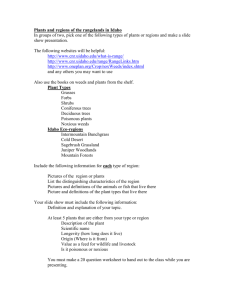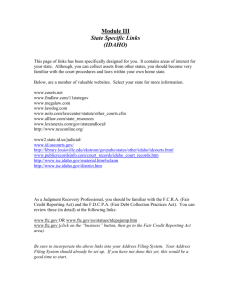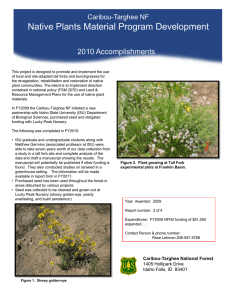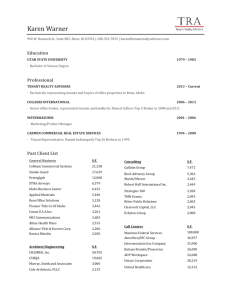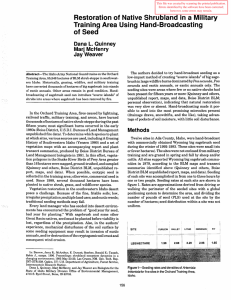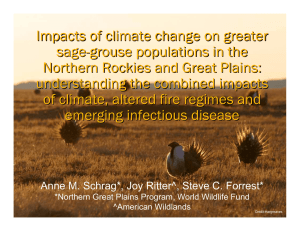Defining contemporary watershed boundaries in the Portneuf River
advertisement
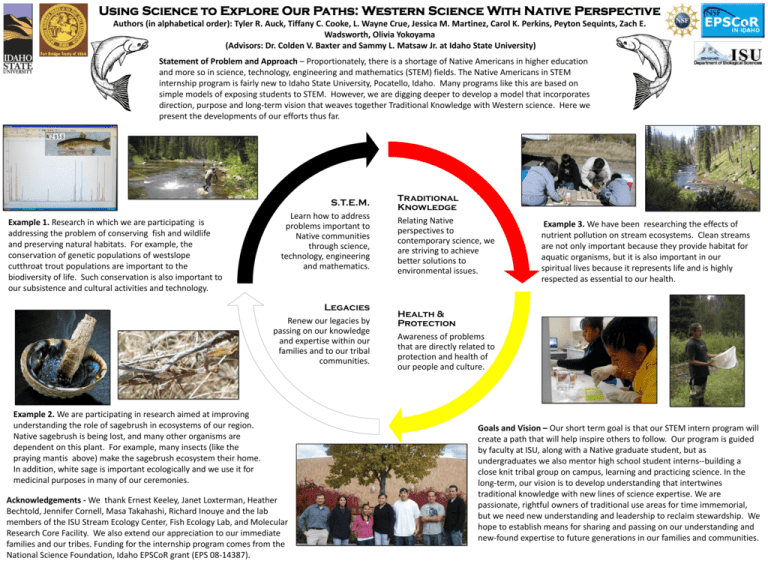
Using Science to Explore Our Paths: Western Science With Native Perspective Authors (in alphabetical order): Tyler R. Auck, Tiffany C. Cooke, L. Wayne Crue, Jessica M. Martinez, Carol K. Perkins, Peyton Sequints, Zach E. Wadsworth, Olivia Yokoyama (Advisors: Dr. Colden V. Baxter and Sammy L. Matsaw Jr. at Idaho State University) Statement of Problem and Approach – Proportionately, there is a shortage of Native Americans in higher education and more so in science, technology, engineering and mathematics (STEM) fields. The Native Americans in STEM internship program is fairly new to Idaho State University, Pocatello, Idaho. Many programs like this are based on simple models of exposing students to STEM. However, we are digging deeper to develop a model that incorporates direction, purpose and long-term vision that weaves together Traditional Knowledge with Western science. Here we present the developments of our efforts thus far. Example 1. Research in which we are participating is addressing the problem of conserving fish and wildlife and preserving natural habitats. For example, the conservation of genetic populations of westslope cutthroat trout populations are important to the biodiversity of life. Such conservation is also important to our subsistence and cultural activities and technology. S.T.E.M. Learn how to address problems important to Native communities through science, technology, engineering and mathematics. Legacies Renew our legacies by passing on our knowledge and expertise within our families and to our tribal communities. Example 2. We are participating in research aimed at improving understanding the role of sagebrush in ecosystems of our region. Native sagebrush is being lost, and many other organisms are dependent on this plant. For example, many insects (like the praying mantis above) make the sagebrush ecosystem their home. In addition, white sage is important ecologically and we use it for medicinal purposes in many of our ceremonies. Acknowledgements - We thank Ernest Keeley, Janet Loxterman, Heather Bechtold, Jennifer Cornell, Masa Takahashi, Richard Inouye and the lab members of the ISU Stream Ecology Center, Fish Ecology Lab, and Molecular Research Core Facility. We also extend our appreciation to our immediate families and our tribes. Funding for the internship program comes from the National Science Foundation, Idaho EPSCoR grant (EPS 08-14387). Traditional Knowledge Relating Native perspectives to contemporary science, we are striving to achieve better solutions to environmental issues. Example 3. We have been researching the effects of nutrient pollution on stream ecosystems. Clean streams are not only important because they provide habitat for aquatic organisms, but it is also important in our spiritual lives because it represents life and is highly respected as essential to our health. Health & Protection Awareness of problems that are directly related to protection and health of our people and culture. Goals and Vision – Our short term goal is that our STEM intern program will create a path that will help inspire others to follow. Our program is guided by faculty at ISU, along with a Native graduate student, but as undergraduates we also mentor high school student interns--building a close knit tribal group on campus, learning and practicing science. In the long-term, our vision is to develop understanding that intertwines traditional knowledge with new lines of science expertise. We are passionate, rightful owners of traditional use areas for time immemorial, but we need new understanding and leadership to reclaim stewardship. We hope to establish means for sharing and passing on our understanding and new-found expertise to future generations in our families and communities.
